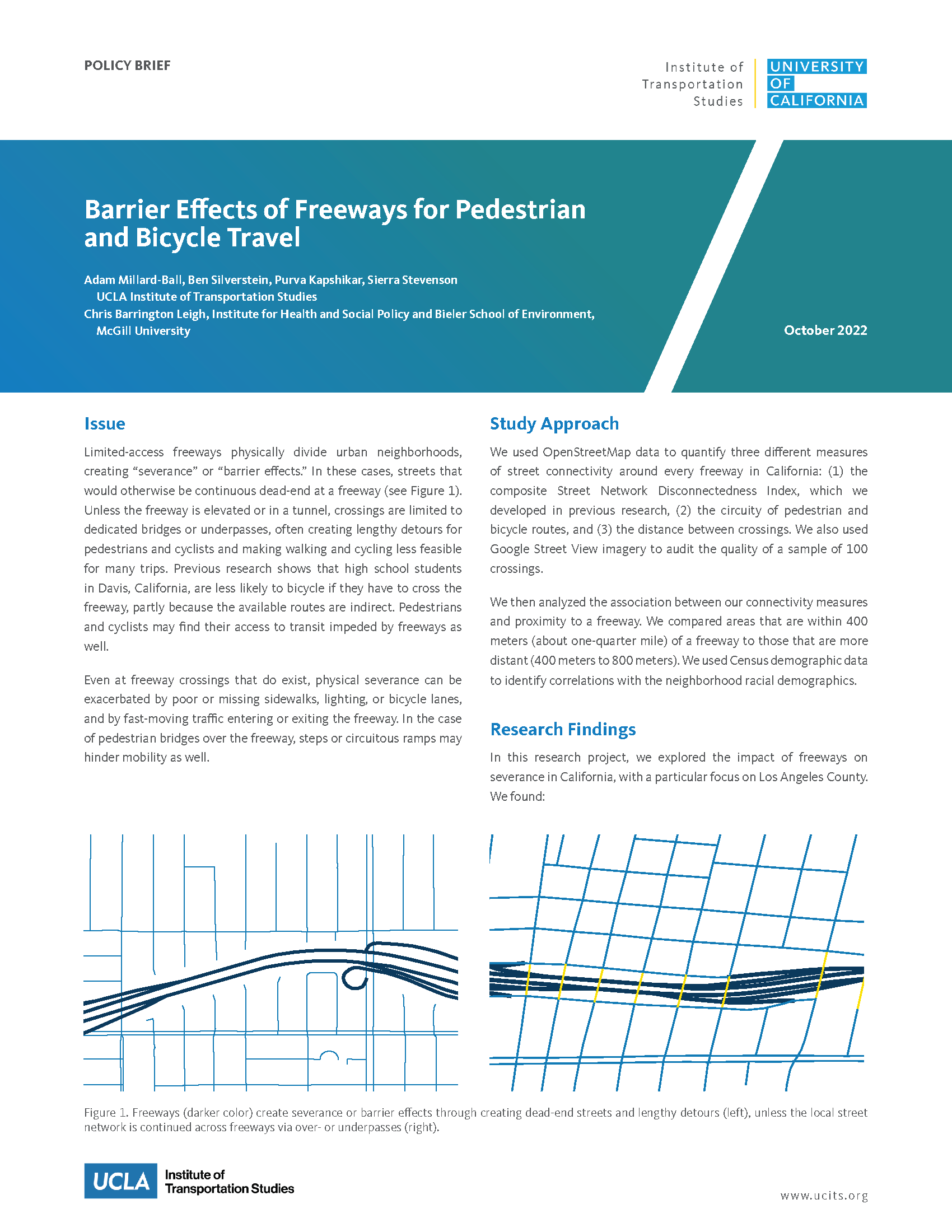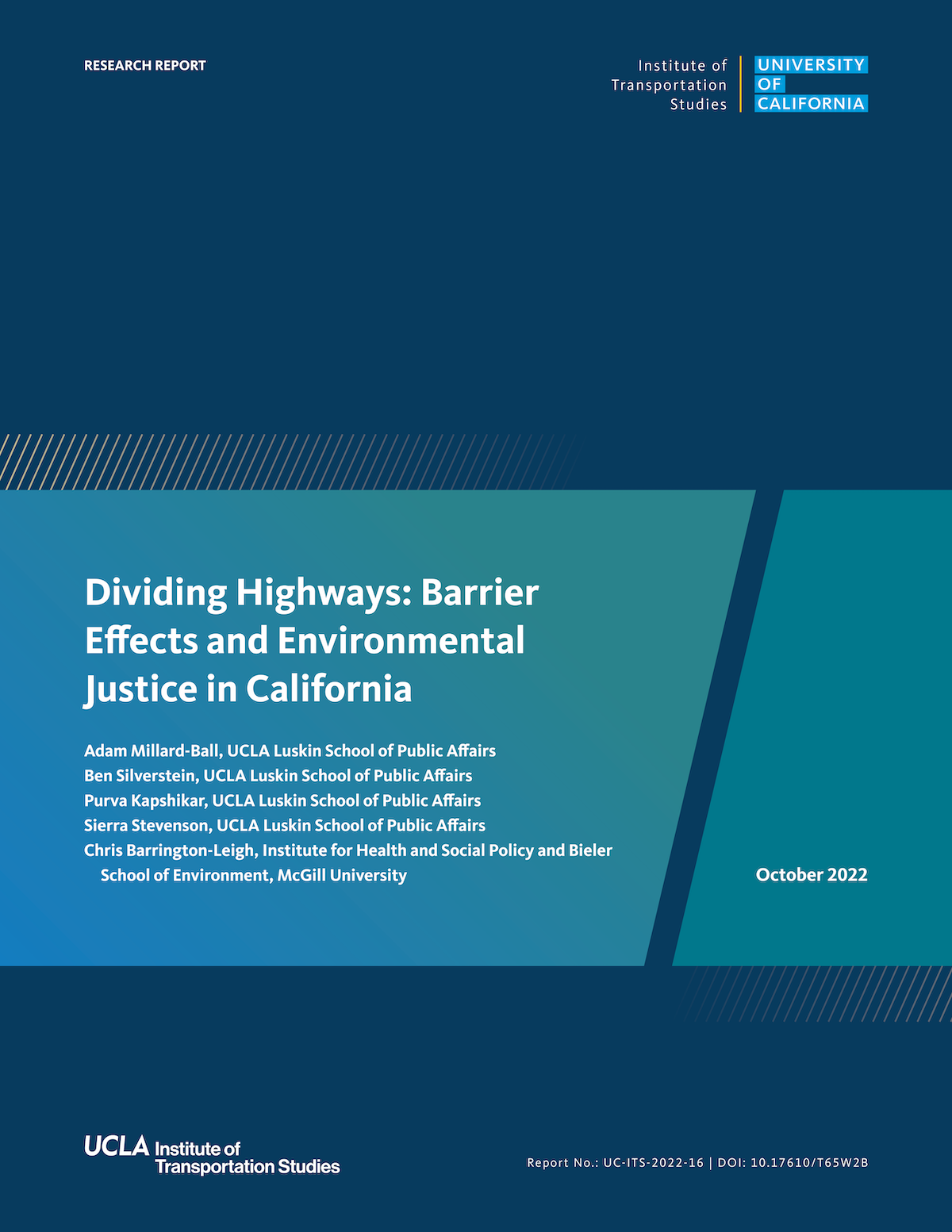Project ID:
LA2108Year Completed:
2022Funding Source:
Statewide Transportation Research ProgramProject Description
The racist legacy of freeways has come into stark focus in the past year. Writing in the Los Angeles Times, Fleischer (2020) calls the region’s freeway system “one of the most noxious monuments to racism and segregation in the country.” Transportation Secretary Pete Buttigieg vowed to right the wrongs that have left “Black and brown neighborhoods…disproportionately divided by highway projects” (Short 2020).
This research focuses on one specific impact of freeways: neighborhood severance. Freeways disrupt the neighborhood street grid, creating particular hardships for pedestrians who must take circuitous routes to access transit and to walk to stores, schools, and other destinations. The impacts of disconnected streets on walking and public health are well documented (e.g. Handy 2003; Marshall et al. 2014; Barrington-Leigh and Millard-Ball 2019). But the environmental justice dimension of connectivity has remained unexplored, as has the link between most academic studies of street connectivity and local planning efforts.
Reducing severance is also a key goal in Caltrans’ 2017 bicycle and pedestrian plan, Towards an Active California. The plan commits the agency to identify and improve highway crossings and to prioritize improvements based on equity criteria.
Publications

Adam Millard-Ball (PI)
adammb@ucla.edu
Program Area(s):



